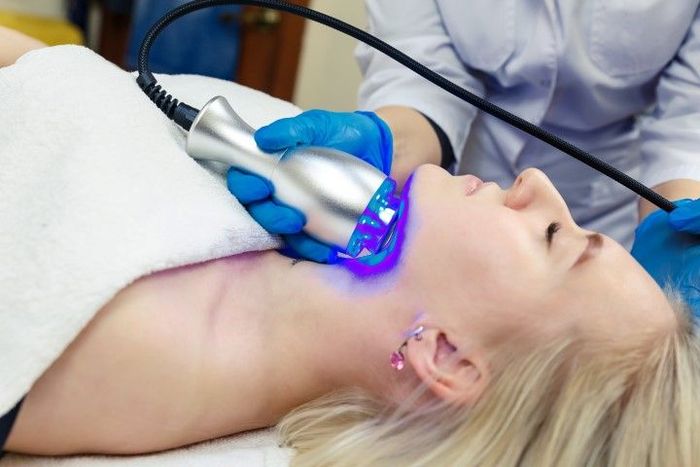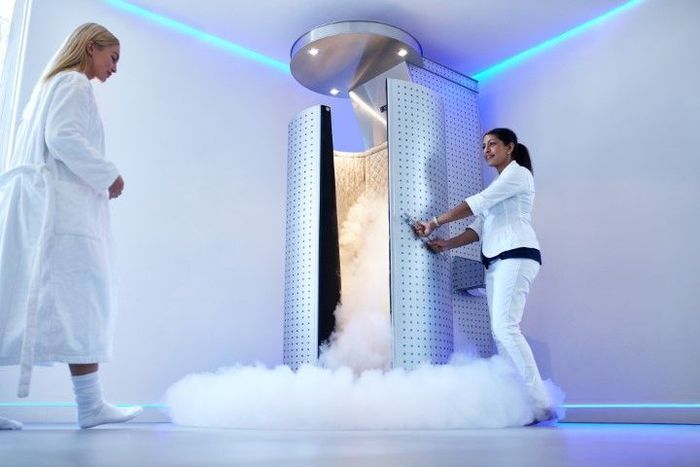Laguna Beach Cryotherapy
Cryotherapy is a type of medical treatment where abnormal tissues are frozen to a very low temperature. The treatment is used to treat cancer, abnormal tissues, and some autoimmune conditions. Depending on the type of treatment, patients may feel some discomfort after the cryotherapy. Afterwards, the skin will return to a normal temperature and muscles will stop hurting.
Although cryotherapy is still a relatively new technique, it has grown in popularity as part of the wellness industry. Many practitioners specialize in cryolipolysis, a medical procedure using cold to freeze abnormal fat. Whole-body cryotherapy is the most common form of cryotherapy, but centralized versions of the treatment are gaining popularity, too. Both types of treatments can be beneficial to the skin, circulatory system, and lymphatic system.
The cold temperatures in a cryotherapy chamber vary from -250 degrees Fahrenheit to minus 200 degrees Celsius. Each person is exposed to the cold temperature for three minutes. The duration of treatment depends on the patient's condition and fitness level. If you are unsure of the safety of cryotherapy, talk to your doctor first. And do some research on the cryotherapy facility you are considering. You may be surprised by the results.



Cryotherapy can help fight some types of cancer. It can destroy pre-cancerous cells and can even kill cancer cells. It is a form of treatment that doctors often use to fight cancer. While the procedure itself may be painful and invasive, it can help patients cope with the discomfort and pain of cancer. A medical professional can use cryotherapy to treat a variety of conditions, including prostate cancer, cervical cancer, and even bone tumors.
When you're wondering what is cryotherapy, it's a procedure that freezes the tumor cells. The cold is delivered through a special device called a cryoprobe. These devices contain liquid nitrogen. The liquid freezes the cells and causes a white scab. The treatment can take a few minutes, or even hours. Afterwards, the doctor will remove the cryoprobes.
How Cryotherapy Can Help You Heal?
Cryotherapy, also known as cold therapy, is the application of low temperatures to treat various tissue lesions. Cryotherapy is most commonly used in surgical treatment, where it is called cryosurgery or cryoablation. Read on to learn more about how this form of therapy can help you heal. You may even be surprised to learn that cryotherapy has a large list of applications beyond the gimmick of treating cold sores.
What Happens When You Have Cryotherapy?
The basic principle behind cryotherapy is the accelerated freezing of tissue with liquid nitrogen. The difference in temperature between the two gases causes a rapid exchange of heat. This exchange then freezes the target tissue cells, causing the affected area to become numb. Different skin types respond differently to this treatment, and the temperature used to freeze cells can vary widely. Nevertheless, cryotherapy has an increasing number of clinical applications, including dermatology and pain management. In a controlled manner, cryotherapy kills diseased tissue by altering the cell membranes during the thaw and freeze cycles.
This disruption is associated with increased production of collagen type III and more organized collagen architecture. This treatment has a significant effect on sinus surgery because of its ability to speed up wound healing. Histological evaluations show improved collagen organization, a reduced keratinization response, and a complete absence of scarring.
In general, cryotherapy has therapeutic effects in reducing pain, swelling, and other symptoms in acute injury and disease. However, it is still debated whether cryotherapy can reduce pain after TKA. Some studies report significant benefits in reducing pain, while others show little or no impact. The mechanism of action of cryotherapy depends on its ability to decrease local metabolism and enzymatic activity, induce vasoconstriction, and reduce nerve signaling.
However, the therapy must be performed with caution to prevent damage to the skin. The procedure involves the freezing of blood vessels by using liquid nitrogen. In cold therapy, the temperature drops to freezing temperatures below -196 degrees Celsius. The temperature will be extremely low for a few minutes. The effects of cryotherapy will vary depending on how the patient responds to the procedure.
Some patients may experience immediate effects, including pain, and in some cases, hair loss. While a single session of cryotherapy does not cause permanent damage, it is still an effective therapy for preventing hair loss. Cryotherapy is an affordable, safe, and effective treatment for osteoarthritis. While it can be effective by itself, it is also often used in combination with other methods. Specifically, the current study looks at the role of cryotherapy in knee osteoarthritis.
Are There
Side Effects in Cryotherapy?
Cryotherapy is a common treatment for inflammatory conditions such as acne and psoriasis. Although it is an invasive procedure, cryotherapy has a few potential side effects. Cryotherapy may cause nerve damage, but normal sensitivity returns after a few months. This treatment also can damage hair follicles, resulting in permanent alopecia in the case of coarse terminal hair.
Some potential side effects of cryotherapy include pain, numbness, and swelling in the area being treated. Depending on the type of cancer, the patient may also experience skin color changes. Patients should list all medications and allergies to their physician before the procedure. They should also avoid taking aspirin, nonsteroidal anti-inflammatory drugs, and blood thinners. Aside from pain, potential side effects may include infection and scarring.
While cryotherapy is safe and involves minimal recovery time, it is best to consult with your doctor regarding the risk of side effects. While the benefits of cryotherapy are temporary, they can be life-threatening if you are pregnant or lactating. As with any medical treatment, cryotherapy should be used in conjunction with a balanced diet and exercise program. This will help maximize the effects of the therapy.